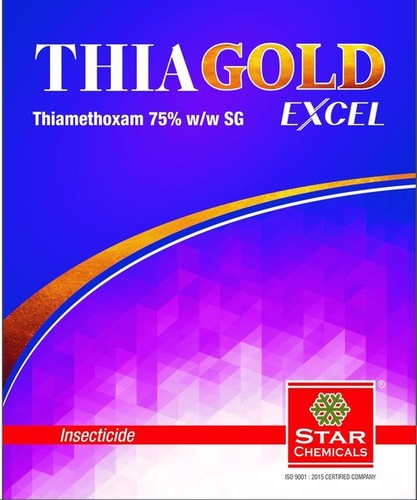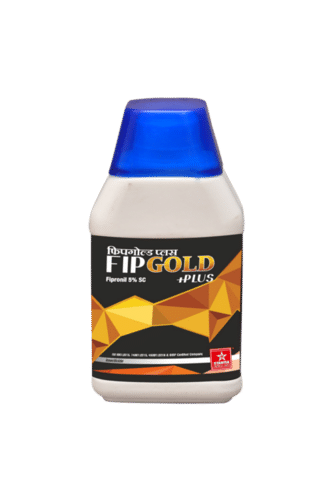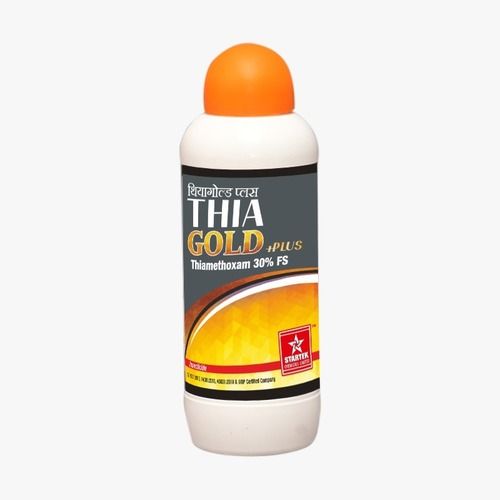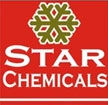
Thiamethoxam 75% SG
Product Details:
- Classification Insecticide
- Release Type Controlled
- Physical State Liquid
- Purity(%) 98% 99% 100%
- Application Agriculture
- Click to View more
Thiamethoxam 75% SG Price And Quantity
- 10 Kilograms
- 1804.0 INR/Box
Thiamethoxam 75% SG Product Specifications
- Insecticide
- 98% 99% 100%
- Liquid
- Controlled
- Agriculture
Thiamethoxam 75% SG Trade Information
- 1000 Kilograms Per Day
- 1 Week
- Yes
- Free samples are available
- 100, 250, 500 GRM & 1 KG
- All India
- CIB,ISO
Product Description
Thiamethoxam 75% w/w SG is a broad-spectrum systemic insecticide commonly used in agriculture. Here's what I can tell you about it:
What it is?
1. Active ingredient: Thiamethoxam 75%
2. Type of insecticide: Neonicotinoid
3. Mode of action: Affects the nervous system of insects, interrupting nerve impulses.
4. Target pests: Wide range of sucking and chewing insects, including aphids, whiteflies, thrips, leafhoppers, and beetles.
5. Application: Typically applied as a soil drench or foliar spray.
Important things to know:
1. Safety: Thiamethoxam can be harmful to humans and animals if not handled properly. Always follow the instructions on the product label and wear appropriate personal protective equipment (PPE) when handling.
2. Environmental impact: There is growing concern about the potential negative impacts of neonicotinoid insecticides on pollinators like bees. The use of thiamethoxam is restricted or banned in some countries.
3. Alternatives: If you are concerned about the safety or environmental impact of thiamethoxam, there are other insecticides available that may be more suitable. Consider consulting with a pest control professional or agricultural extension agent to discuss alternatives.
Frequently Asked Questions:
Q. What is Thiamethoxam 75% w/w SG?
Ans: It's a broad-spectrum, systemic insecticide containing 75% thiamethoxam as the active ingredient.
Q. What insects does it target?
Ans: A wide range, including aphids, whiteflies, thrips, leafhoppers, and beetles.
Q. How does it work?
Ans: It disrupts the nervous system of insects, leading to paralysis and death.
Q. How is it applied?
Ans: Typically as a soil drench or foliar spray, depending on the specific product and target pest.
Q. Is it safe for humans and animals?
Ans: If handled properly, following label instructions and using PPE. However, it can be harmful if ingested or absorbed through skin.
Q. Are there environmental concerns?
Ans: Yes, there are concerns about its potential harm to pollinators like bees. Some countries restrict or ban its use.
Q. What are the regulations for its use?
Ans: Regulations vary by country and region. Always check local regulations before using.
Q. Are there safer alternatives?
Ans: Yes, depending on the specific pest and situation. Consult a pest control professional or agricultural advisor.
Q. What are the benefits of using it?
Ans: Effective against a wide range of pests, systemic action provides long-lasting protection.
Q. What are the drawbacks of using it?
Ans: Potential safety and environmental concerns, development of insect resistance.
Q. What are the specific application rates and instructions for different crops?
Ans: Refer to the product label for specific details and consult agricultural extension services for regional recommendations.
Q. How long does it take to work?
Ans: Onset of action depends on factors like application method, pest species, and environmental conditions. Consult the product label or expert advice.
Q. How long does it remain effective?
Ans: Varies depending on application method, weather, and degradation rate in soil or plant tissues. Refer to product label or expert advice.
Q. Can it be used with other pesticides?
Ans: Consult the product label and expert advice for compatibility information. Mixing pesticides can be dangerous.

Price:
- 50
- 100
- 200
- 250
- 500
- 1000+

 English
English Spanish
Spanish French
French German
German Italian
Italian Chinese (Simplified)
Chinese (Simplified) Japanese
Japanese Korean
Korean Arabic
Arabic Portuguese
Portuguese









